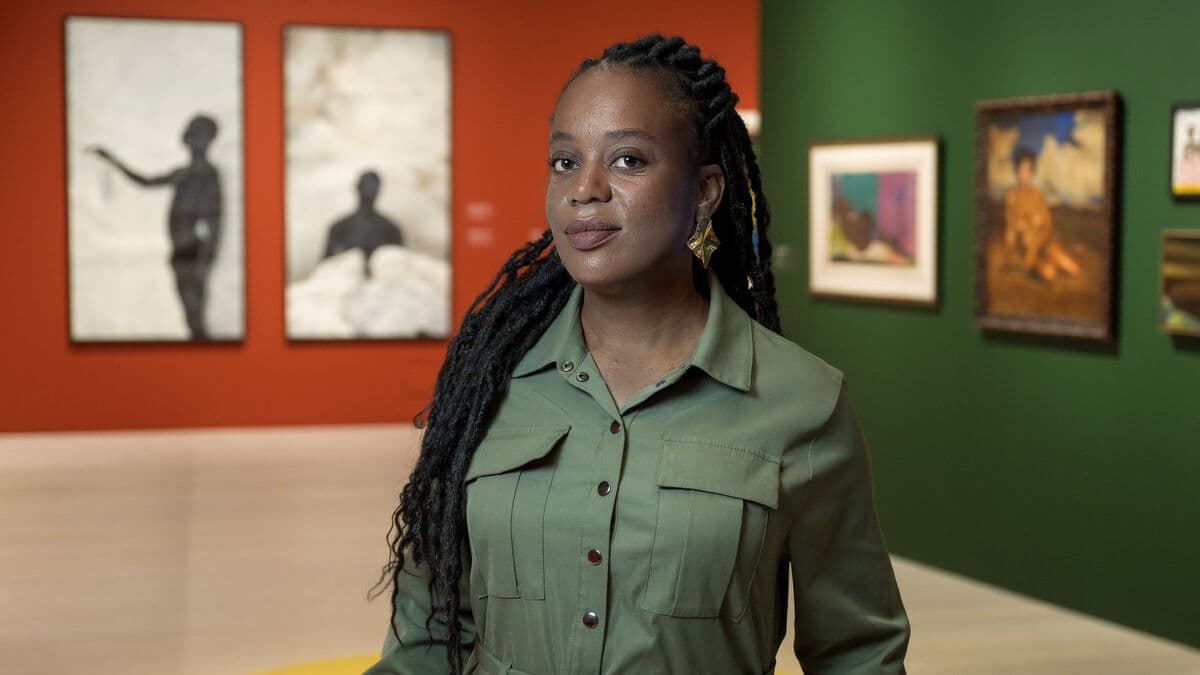Over 148 different works by artists from both the African continent and the diaspora are on display for nine months at Liljevalchs in Stockholm. The exhibition, which was originally produced by Cape Town's Zeitz Museum of Contemporary Art Africa (Zeitz MOCAA), has been called one of the most significant of our time.
The exhibition writes about art history, says the art gallery manager and co-curator Joanna Sandell Wright, whose ambition is to bring the world into the art gallery.
A black art canon is on display here, which, however, does not have the requirement to represent an entire continent, emphasizes Dhlakama. She and curator Koyo Kouoh were disturbed by how media in the West wrote about African art.
We wanted to challenge harmful tropes and stereotypes and remind that just like in the rest of the world, there is a long art history – and we wanted to show the very rich and diversified African art canon.
Liberation and joy
The exhibition revolves around six themes: "everyday life, joy and celebration, rest, sensuality, spirituality, and triumph and liberation". Black artists do not always need to depict trauma, emphasizes Tandazani Dhlakama.
Sometimes African artists are pressed to always create works that deal with pain. It is also important, but we wanted to show that artists have depicted other things as well. At the same time, the exhibition does not say: let us ignore colonialism and be happy.
The curators also drew on liberation movements such as the Harlem Renaissance, the anti-apartheid movement, the pan-African movement, and Black lives matter. Many of the works were painted during the darkest of times, reminds Dhlakama. Like George Pemba's "The Audience" of a couple at the cinema, painted during the violent apartheid of the 1960s.
Even then, black artists created works that refused to put trauma and whiteness at the center.
"Praise ourselves"
The Cameroonian political scientist Achille Mbembe's ideas about self-representation have been a great inspiration. The exhibition also challenges what it means to be black – just look at all the skin tones, says Tandazani Dhlakama as she walks among the works of artists from Haiti, the USA, and Zimbabwe.
At Zeitz MOCAA, known as Africa's largest museum of contemporary art, European tourists still come looking for traditional African masks, Dhlakama tells.
This is something we have to deal with regularly. But this is about praising ourselves, regardless of what others see, she says.
Elin Swedenmark/TT
Facts: "When we see us"
TT
The exhibition includes over 148 works, borrowed from institutions and private collectors from 26 different countries.
It was curated by Koyo Kouoh, who passed away in the spring of 2025. The exhibition was completed by co-curator Tandazani Dhlakama, who now works at the Royal Ontario Museum in Canada.
The title of the exhibition is inspired by Ava DuVernay's miniseries "When they see us" from 2019, where "they" has been replaced by "we" for a different perspective on the conversation, with inspiration from the Cameroonian political scientist and professor Achille Mbembe.
Works by artists who have never been shown in Sweden before are on display here, such as Njideka Akunyili Crosby, Zandile Tshabalala, Jacob Lawrence, Chéri Samba, Danielle McKinney, Ben Enwonwu, and Kingsley Sambo.
The exhibition is shown with music by the South African composer and sound artist Neo Muyanga.





